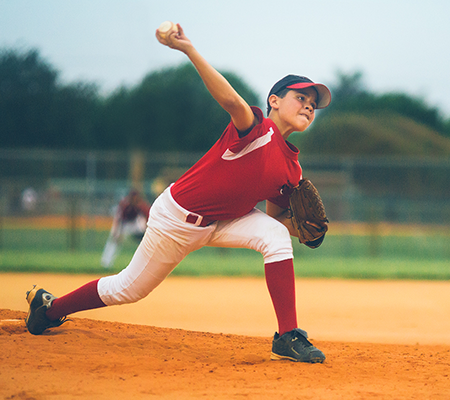
An increase in pitching injuries is an issue for all levels of play within the game of baseball.
An increase in pitching-related injuries is an issue for all levels of play within the game of baseball. Athletic directors, coaches, parents and players in school and club sport baseball leagues need to understand the importance of addressing pitcher safety.
Tom Katz, Marshfield Clinic Health System physical therapist, gave his advice on this important topic.
Some factors that dramatically increase risk of injury include:
- Overuse
- Improper conditioning
- Improper pitching mechanics
- Pitching on multiple teams
- Multiple games on the same day
- Competitive pitching more than eight months a year
Katz said that at an increasingly young age we competitively pitch too much and don’t practice or throw enough. To help mitigate that trend and prevent overuse injuries, USA Baseball and Major League Baseball have developed the Pitch Smart Guidelines. These guidelines are widely endorsed by baseball organizations and the medical community. Pitch count requirements are based on age:
| Age | Pitches/Day |
| 7 – 8 | 50 |
| 9 – 10 | 75 |
| 11 – 12 | 85 |
| 13 – 16 | 95 |
| 17 – 18 | 105 |
Pitcher rest day requirements are based on the number of pitches thrown in a day. The criteria are divided into two categories:
Ages 7 – 14
- 1-20 pitches/No rest day
- 21-35 pitches/One rest day
- 36-50 pitches/Two rest days
- 51-65 pitches/Three rest days
- 66 or more pitches/Four rest days
Ages 15 – 18
- 1-30 pitches/No rest day
- 31-45 pitches/One rest day
- 46-60 pitches/Two rest days
- 61-75 pitches/Three rest days
- 76 or more pitches/Four rest days
Age is a factor in bone and joint growth and development, and in hand and eye coordination. From a pitching development standpoint, it is recommended that throwing certain types of pitches begin at a particular age, plus or minus two years:
- Fastball: age 8
- Change up: age 10
- Curveball: age 14
- Forkball: age 16
- Slider: age 16
- Screwball: age 17
“Adopting pitch count recommendations and rest day protocols has increased awareness about the health and safety of pitchers at all levels of baseball,” Katz said.
For more information regarding pitch count guidelines, visit: mlb.com/pitch-smart.

